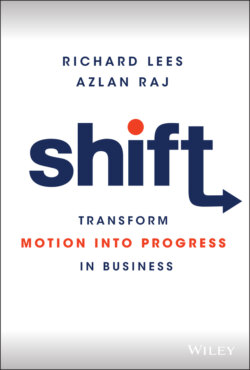Читать книгу Shift - Richard Lees - Страница 11
Charting progress in a modern business world
ОглавлениеThe business world today, especially after black swan events like the 2008 financial crisis or the global COVID-19 pandemic, is characterised by an increasingly big number of known unknowns. It seems clear that the past is probably no longer a safe basis for predicting the future, and much of what we have learned and been taught may well have limited relevance to our future decision making.
The competition feels like it can come from anywhere, and time is definitely no longer on your side. As Rupert Murdoch said (in 1999!), “The world is changing very fast. Big will not beat small anymore. It will be the fast beating the slow”.
To not only survive, but to thrive in the new world is a constant challenge that requires businesses to fast become the masters of many things. Agility (speed) and adaptability (ability to change) have become strategic differentiators, giving those businesses that can rapidly adapt and build a muscle to respond to change a massive advantage.
“The speed and availability of data, technology, analytics, content, and platforms is creating this perfect storm where we can finally capitalise on the opportunity presented by the total customer experience in a way that we just couldn't before. If brands are not on that journey to that complete and total customer experience across those dimensions of sales, service, commerce and marketing, they just won't be around in the future.”
Craig Dempster, Global CEO, Merkle
Some businesses have the advantage of already being in this state (let's call them the leaders). Others are undergoing massive transformations to close the gap and either attain or regain this state (let call them the followers, who are playing catchup). However, to do this requires sustained and directed momentum, or motion, but motion alone will not give you the advantage. The advantage comes from turning motion into progress.
This might sound simple enough, but often this is more difficult to achieve than it first appears. The result in many businesses is a great deal of motion that adds little real value and instead wastes precious time and resources, and may even contribute to a loss of competitive advantage. The opportunity, as we explain in this book, is to turn that motion into progress. To do that, you need to connect the three core themes of the business ecosystem, which we are calling the principal, the crew, and the season.
